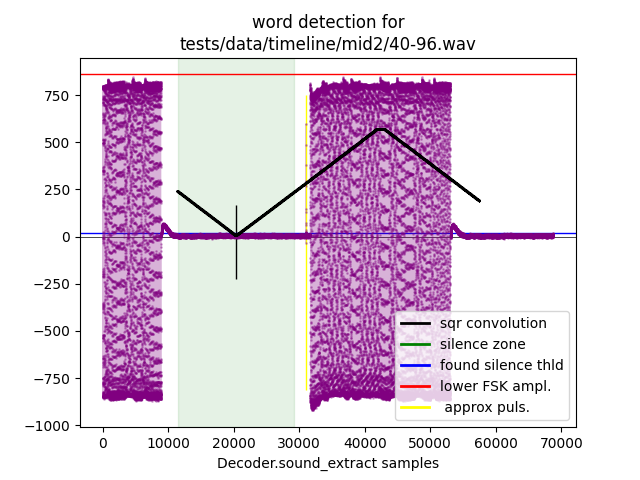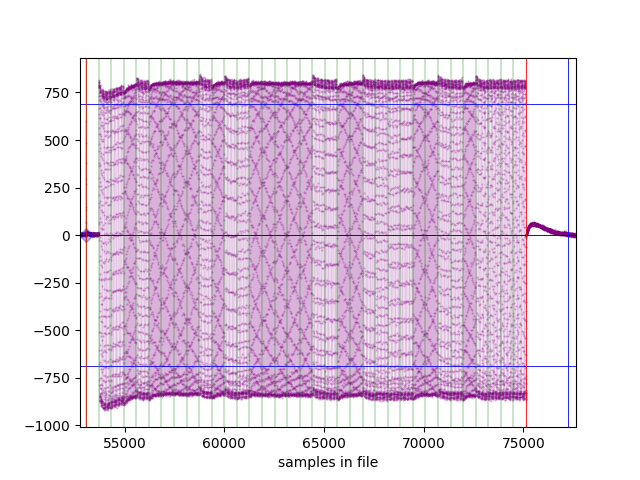command for syncing audio video recordings
Project description
tictacsync
Warning: this is at pre-alpha stage
Unfinished sloppy code ahead, but should run without errors. Some functionalities are still missing. Don't run the code without parental supervision. Suggestions and enquiries are welcome via the lists hosted on sourcehut.
Description
tictacsync is a python script to sync audio and video files shot
with dual system sound using a specific hardware timecode generator
called Tic Tac Sync. The timecode is named YaLTC for yet
another longitudinal time code and should be recorded on a scratch
track on each device for the syncing to be performed, later in postprod before editing.
Status
tictacsync scans for audio video files and displays their starting time and then merges overlapping audio and video recordings. Multicam syncing with one stereo audio recorder has been tested (spring 2023, see demo). Multi audio recorders coming soon...
Installation
This uses the python interpreter and multiple packages (so you need python 3 + pip). Also, you need to install two non-python command line executables: ffmpeg and sox. Make sure those are accessible through your PATH system environment variable.
Then pip install the syncing program:
> pip install tictacsync
This should install python dependencies and the tictacsync command.
Usage
Download multiple sample files here (625 MB, sorry) unzip and run:
> tictacsync dailies/loose
The program tictacsync will recursively scan the directory given as argument, find all audio that coincide with any video and merge them into a subfolder named SyncedMedia. When the argument is an unique media file (not a directory), no syncing will occur but the decoded starting time will be printed to stdout:
> tictacsync dailies/loose/MVI_0024.MP4
Recording started at 2024-03-12 23:07:01.4281 UTC
true sample rate: 48000.736 Hz
first sync at 27450 samples in channel 0
N.B.: all results are precise to the displayed digits!
If shooting multicam, put clips in their respective directories (using the camera name as folder name) and the audio under their own directory. tictacsync will detect that structured input and will generate multicam folders ready to be imported into your NLE (for now only DaVinci Resolve has been validated).
Options
For a very verbose output add the -v flag:
> tictacsync -v dailies/loose/MVI_0024.MP4
For a one line output (or to suppress the progress bars) use the --terse flag:
> tictacsync --terse dailies/loose/MVI_0024.MP4
dailies/loose/MVI_0024.MP4 UTC:2024-03-12 23:07:01.4281 pulse: 27450 in chan 0
To also produce synced ISO audio files, specify --isos . A directory named ISOs will contain for each synced video a set of audio files of exact same length, padded or trimmed to coincide with the video track. After re-editing and re-mixing a remergemix command will resync the new sound track with the video [TODO].
> tictacsync --isos dailies/structured
When called with the -p flag, zoomable plots will be produced for diagnostic purpose (close the plotting window for the 2nd one) and the decoded starting time will be output to stdin:
> tictacsync -p dailies/loose/MVI_0024.MP4
Typical first plot produced :
Typical second plot produced (note the 34 FSK encoded bits 0010111101001111100110000110010000):
Project details
Release history Release notifications | RSS feed
Download files
Download the file for your platform. If you're not sure which to choose, learn more about installing packages.
Source Distribution
Built Distribution
Hashes for tictacsync-0.3a1-py3-none-any.whl
| Algorithm | Hash digest | |
|---|---|---|
| SHA256 | 376bd0020d1a98ad3eb818bfac04c4aa8d786be0f6f300ac9de2c81799fdae5e |
|
| MD5 | b1ca077f2b4dc4a19fd85dd37ff75ea5 |
|
| BLAKE2b-256 | 1d212992ddafef9d359d9b950b041f41f3e56ce5b3d64ea7eeb7822ffcf0c82d |













